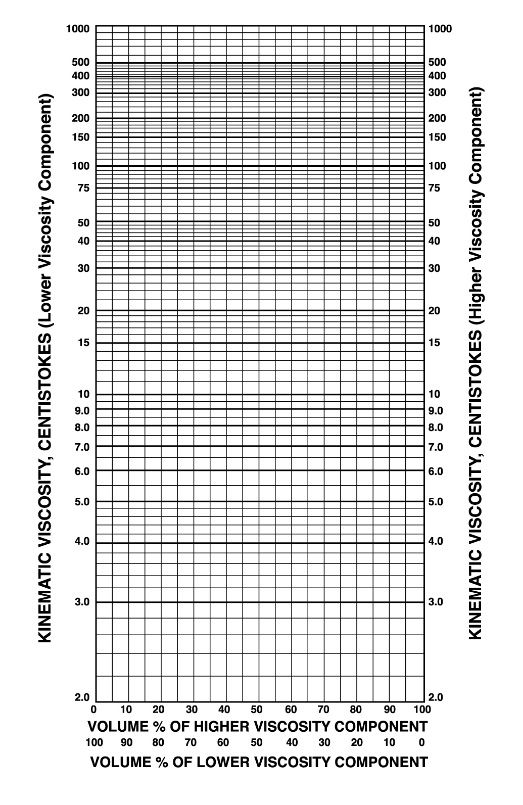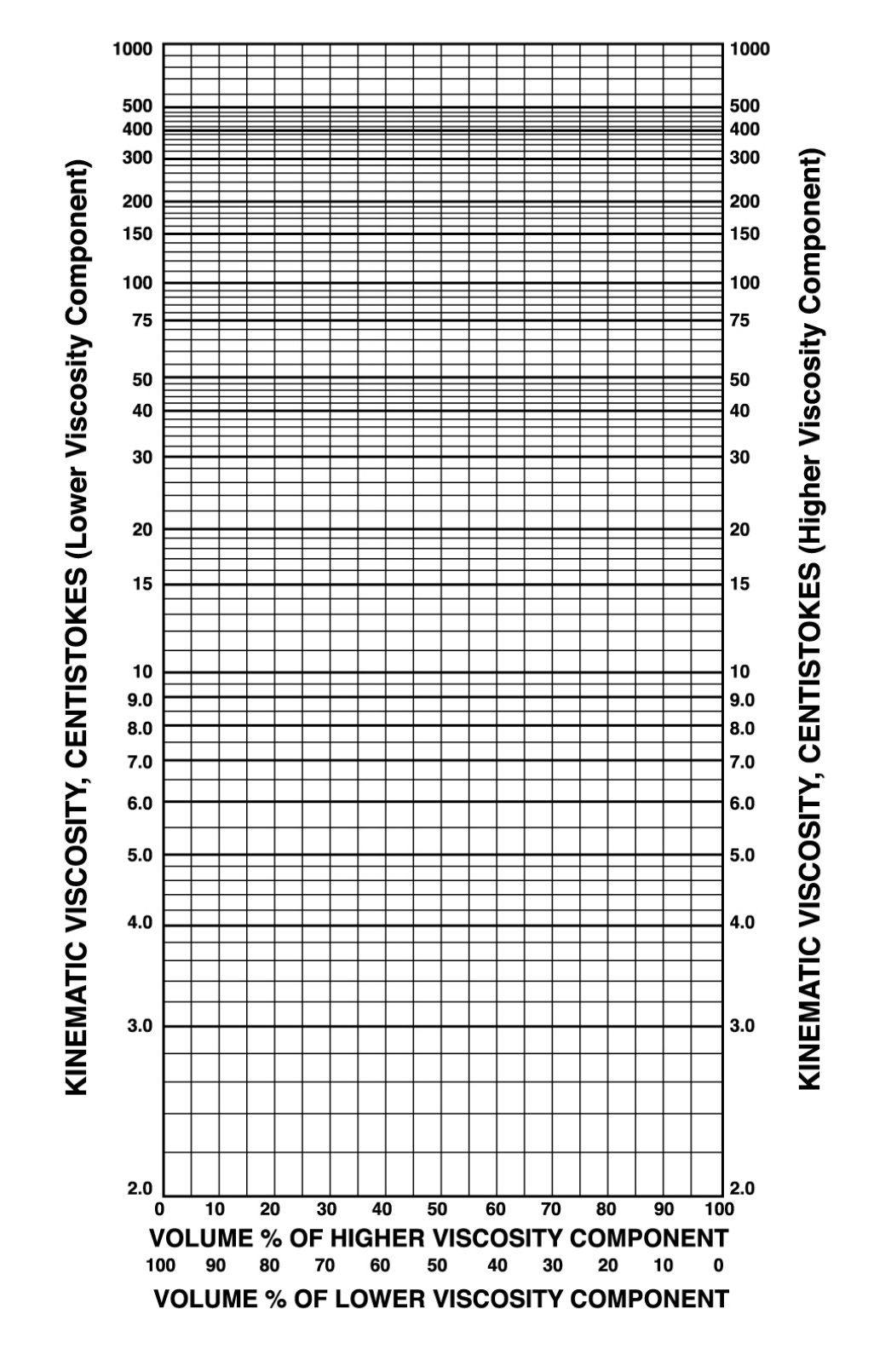
Find your Country and language
Lubricants Beyond Today's Standards TM
Petro-Canada™ Lubricants' distribution network extends to over 80 countries worldwide
Исключая Республику Крым, Донецкую Народную Республику и Луганскую Народную Республику

Petro-Canada™ Lubricants' distribution network extends to over 80 countries worldwide



Place straight edge at equal centistoke values on both Kinematic scales. All viscosities on each scale will be equivalent for the same temperature.To extend scale ranges to higher viscosities, utilize powers of 10 in these scales between the 100 and 1000 divisions on the Kinematic scale,
i.e. 3000 centistokes = 300 cSt x 10
and is approximately equivalent to
1400 x 10 = 14000 SUS.
To convert from dynamic or absolute viscosity in centiPoise (cP) to kinematic viscosity in centiStokes (cSt), at a given temperature, use the following equation:
cSt = cP / density (Kg/L)
Determine the relative viscosities, at a common temperature, of the two base oils to be blended.
i.e. 80 Neutral 15 cSt @ 40°C
160 Neutral 35 cSt @ 40°C
Locate these viscosities on the appropriate sides of the chart and join them with a straight line. From this chart and the line, you can:
TM Принадлежит или используется по лицензии.
©2026 Petro‐Canada Lubricants Inc. Все права защищены.